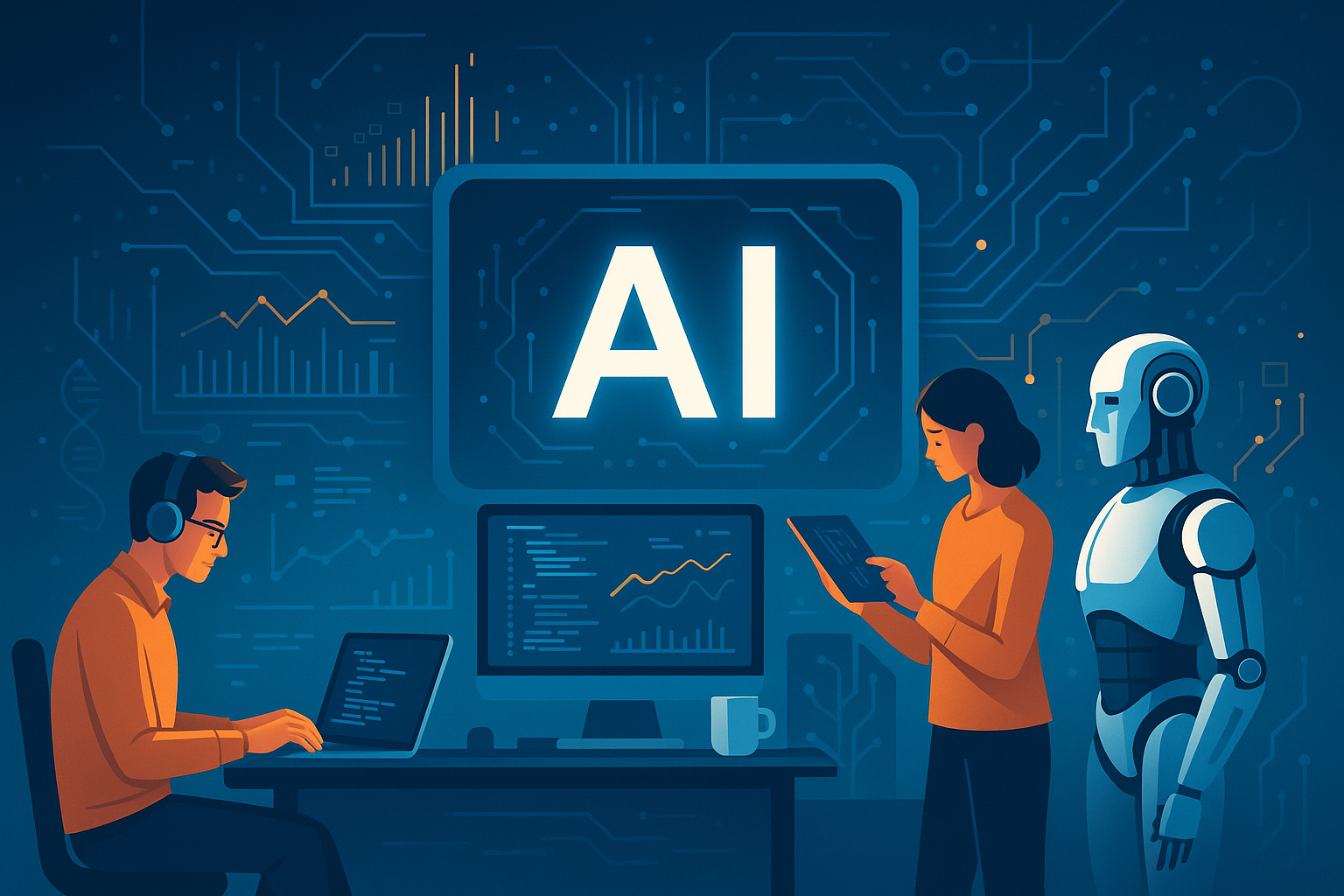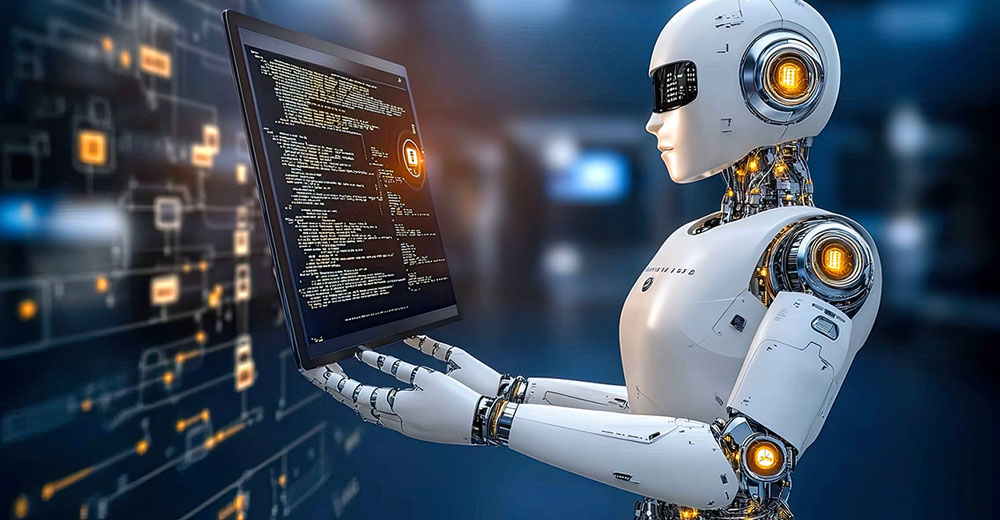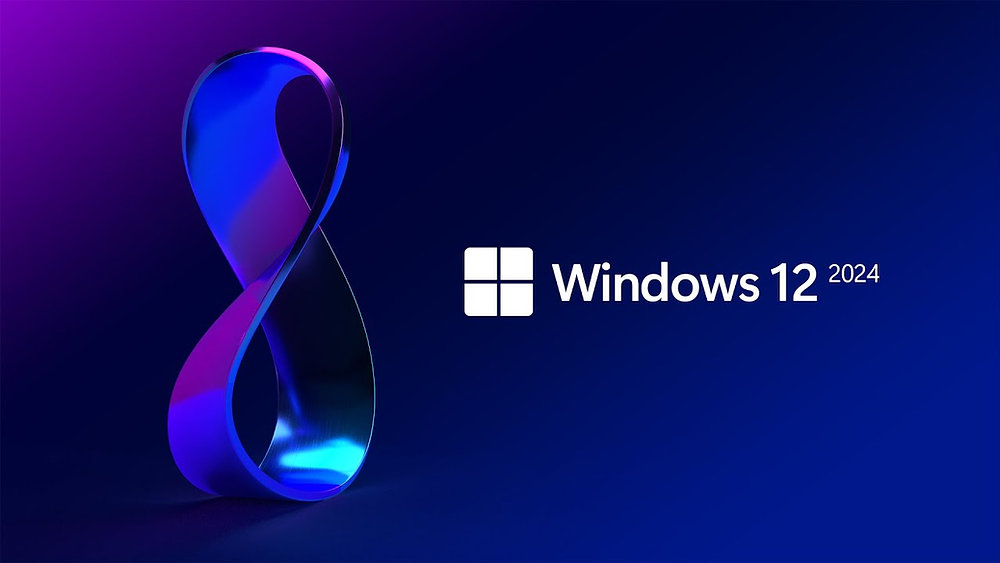Introduction: The Rise of AI in the Modern Tech Era
Artificial Intelligence (AI) is no longer a futuristic concept—it’s a daily reality driving every corner of the tech industry. From intelligent chatbots to self-coding systems, AI has revolutionized how developers build, test, and deploy software. Businesses that understand how to use AI in tech are gaining a competitive edge by automating processes, making data-driven decisions, and delivering personalized user experiences.
In today’s rapidly evolving digital landscape, AI-powered technologies like machine learning, natural language processing, and neural networks are redefining how we interact with machines. Tech giants like Google, Microsoft, and OpenAI have made AI accessible to everyone through APIs, cloud services, and open-source tools—allowing even small startups to innovate faster than ever before.
Understanding Artificial Intelligence and Its Core Technologies
What is Artificial Intelligence (AI)?
AI refers to the simulation of human intelligence in machines that can learn, reason, and make decisions. Unlike traditional programming, where every rule is explicitly defined, AI systems improve automatically by analyzing vast amounts of data.
In the tech world, AI enables systems to automate repetitive tasks, detect anomalies, and generate insights from unstructured information—something impossible just a decade ago.
Key AI Technologies Shaping the Tech Landscape
Some of the most impactful technologies behind AI’s success include:
- Machine Learning (ML): Algorithms that learn from data to make predictions.
- Deep Learning: Neural networks that mimic human brain patterns for image and speech recognition.
- Natural Language Processing (NLP): Understanding human language for chatbots and voice assistants.
- Computer Vision: Enabling machines to see, analyze, and interpret visual input.
- Reinforcement Learning: Systems that learn through trial and error, perfect for robotics and gaming.
How AI Is Changing the Tech Industry
Automation and Smart Systems
AI allows tech companies to automate mundane processes—from running code tests to managing server uptime. Tools like GitHub Copilot and Jenkins AI can detect bugs, suggest improvements, and even write functional code snippets.
AI in Data Analysis and Predictive Modeling
The tech industry thrives on data. AI models can process petabytes of information, uncovering hidden patterns and predicting trends. This helps teams anticipate customer behavior, optimize performance, and improve product design.
AI-Powered Cybersecurity Solutions
AI has become the backbone of modern cybersecurity. Machine learning algorithms can detect malware or phishing attempts in real-time, reducing the risk of cyberattacks by analyzing anomalies across massive datasets.
How To Use AI in Tech — Practical Applications
1. Using AI in Software Development and Testing
Developers now use AI-based tools to automate code generation, debugging, and performance optimization. Platforms like ChatGPT, Codium, and Tabnine are revolutionizing the software development lifecycle.
2. Integrating AI into Cloud Computing Platforms
AI enhances cloud environments by managing data more efficiently. Services such as AWS AI, Azure Cognitive Services, and Google Cloud AI offer APIs that help companies deploy AI solutions without building from scratch.
3. Enhancing UX/UI Design with AI Tools
Designers use AI tools like Figma AI and Adobe Firefly to analyze user interactions and generate adaptive layouts, improving usability and visual appeal.
4. AI in Robotics and IoT Devices
AI brings real-time decision-making to robotics and Internet of Things (IoT) ecosystems. Smart devices can now learn user habits, adjust operations, and interact autonomously.
How Startups and Businesses Can Leverage AI Tools
Affordable AI Platforms for Small Tech Teams
Startups can start small with tools like Hugging Face, TensorFlow Lite, or AutoML to integrate AI affordably. Many offer freemium plans, making AI adoption easier.
How to Implement AI Without a Data Science Background
Platforms such as Microsoft Power Automate and Google Vertex AI provide drag-and-drop AI solutions, empowering non-technical users to apply AI effectively.
Challenges in Implementing AI in Tech
Data Privacy and Ethical Concerns
AI systems rely on data—and with that comes privacy concerns. Companies must ensure transparency, data protection, and ethical AI use to maintain trust.
AI Bias and Fairness in Algorithms
Bias in AI can lead to discriminatory outcomes. Developers should prioritize fairness, diversity in datasets, and continuous monitoring to ensure AI decisions are unbiased.
The Future of AI and Tech Innovation
Emerging Trends: Quantum AI, Edge AI, and Beyond
The next era of technology will blend quantum computing with AI, enabling processing speeds unimaginable today. Edge AI will also push intelligence closer to devices, reducing latency and enhancing user experiences.
How AI Will Shape the Next Decade of Technology
AI will redefine the boundaries of creativity, automation, and innovation—powering breakthroughs in healthcare, education, and environmental sustainability.
FAQs: How To Use AI in Tech
1. What is the best way to start using AI in tech projects?
Start small—integrate AI APIs into existing tools or automate simple workflows using pre-built AI models.
2. Can small businesses afford AI integration?
Yes, thanks to cloud-based AI services offering free or pay-as-you-go pricing models.
3. How does AI improve software development?
AI helps detect bugs, optimize code, and suggest improvements automatically, saving time and resources.
4. What skills are needed to work with AI in tech?
Basic understanding of Python, machine learning concepts, and data visualization is helpful.
5. Is AI replacing human jobs in technology?
AI is not replacing humans—it’s enhancing productivity, freeing up humans for creative and strategic work.
6. What are the best AI tools for tech startups?
Some top tools include OpenAI API, Hugging Face, Google Cloud AI, and TensorFlow.
Conclusion: Building a Smarter Tech Future with AI
The synergy between AI and technology is transforming how we innovate, build, and solve problems. By understanding how to use AI in tech, individuals and businesses can unlock new opportunities, boost efficiency, and lead the way toward a more intelligent digital future.



